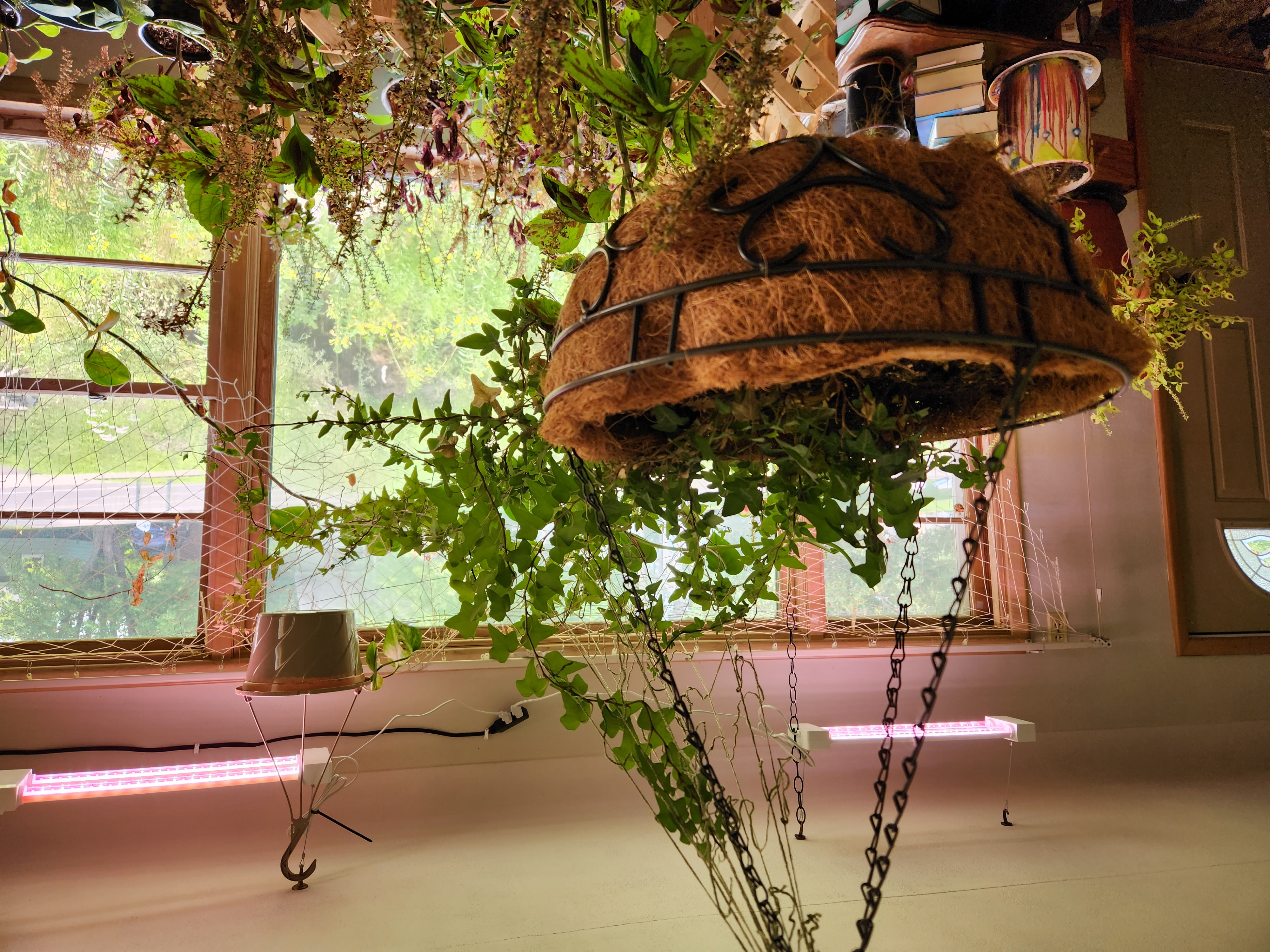Sustainability Technical Details

Modern agriculture accounts for 11% of global carbon emissions. The depletion of soil that modern agriculture causes requires continual inputs of synthetic nitrogen fertilizer. Nitrogen fertilizer applied to farmland and suburban lawns is water soluble, so it washes away in the rain as water pollution.
The gasoline motors that most leaf blowers and lawn mowers use create lots of pollution. The typical suburban lawn requires mowing, watering, herbicides, and fertilizer. These costly products and services hurt the environment. And for what? A grass lawn doesn't produce anything.
Price and engagement are important parts of sustainability. We want to create a self sustaining system that will last for decades. And you are the essential aspect of that system. We create a more engaging space that is cheaper to maintain and produces things that you want: a beautiful flower to woo your love; a fragrant mint leaf on a hot day; the sounds of songbirds and crickets.
-
Carbon Cycle
Carbon travels back and forth between the air, plants and animals. Plants absorb carbon from the air through photosynthesis and create carbohydrates (molecules made of carbon and hydrogen). Animals burn the carbohydrates as food and release carbon back into the air as carbon dioxide. This cycle has remained in balance for all of human history until recently.
Every time we plow the soil, we turn some of it into carbon dioxide. This reduces fertility and contributes to climate change. We do the reverse. By burying wood in the soil, we take carbon dioxide out of the air and create more fertile soil.
-
Nitrogen
Nitrogen makes up 78% of our atmosphere. It exists in the air as an inert gas. In order to make it available to plants, it needs to get into the soil. The standard modern method of making nitrogen fertilizer is the Haber-Boche process. This requires the use of fossil fuels to create the heat and pressure needed. There is also the occasional fatal explosion
Biological nitrogen fixation is the biological process of making nitrogen bioavailable. We use plants that have a symbiotic relationship with soil bacteria that fix the nitrogen. These plants include clover, alfalfa, peas, and beans.
-
Avoiding Cement
The chemical process of creating cement releases carbon into the air. We avoid cement. When called for we use clay bricks or locally quarried rocks and gravel.
-
Biochar
Charcoal is incompletely burned wood. Biochar is charcoal but more so.
-
Water
Buried wood acts as a sponge. By soaking up the water while it is overabundant, this reduces pressure on local storm drains and can mitigate basement flooding. Plants that are rooted into a damp sponge are more resistant to drought, requiring less water during dry times.
A water catchment system reduces flood pressure when it rains heavily. That water can be applied to thirsty plants during dry times, mitigating both flood and drought.
Swales are landscaping installations that concentrate rainwater runoff into small areas. This allows for the success of thirsty plants like trees and blueberries without drawing on city or well water.
